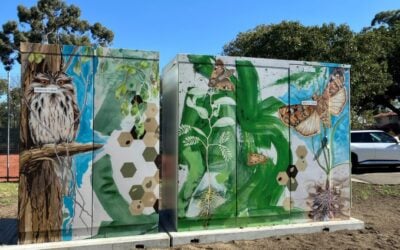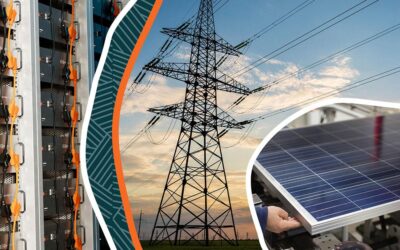
Europe’s telecommunications sector has the potential to deploy 15GWh of distributed energy storage (DES), halving its energy costs and helping the energy transition, Finnish telecoms firm Elisa said discussing its new DES solution with Energy-Storage.news.
The firm has launched a DES smart energy solution which it is offering to other telecommunications network operators to enable them to leverage energy storage across their networks into a virtual power plant (VPP).
Enjoy 12 months of exclusive analysis
- Regular insight and analysis of the industry’s biggest developments
- In-depth interviews with the industry’s leading figures
- Annual digital subscription to the PV Tech Power journal
- Discounts on Solar Media’s portfolio of events, in-person and virtual
Using the solution, operators can utilise DES assets across their radio access networks (RAN) to participate in electricity markets and optimise their own energy consumption. Doing so could halve operators’ electricity costs while helping the integration of renewable energy in the wider market, Elisa said.
Elisa announced in February 2023 that it would be rolling out 150MWh of batteries across its network which it would aggregate with its DES platform, as reported by Energy-Storage.news at the time.
A spokesperson for Elisa told Energy-Storage.news that these are all lithium-ion, lithium-iron phosphate (LFP) batteries. Most existing backup power today at RAN networks is made up of lead-acid batteries.
“We are evaluating the performance of sodium-based chemistries, but do not expect mass deployments with those to start yet in 2024,” they added.
The total RAN network in Europe is around 100 times larger than Elisa’s in Finland, meaning the potential energy storage market for RAN networks could be around 15GWh with more from fixed networks and data centers.
The firm’s DES solution has only been deployed in its home markets of Finland and Estonia to-date and the spokesperson said it could be made suitable for any market: “At present the way northern European markets are operated and regulated – Nordics, Belgium, Netherlands, Germany, France, UK – they are all suitable. With EU harmonisation of electricity markets proceeding, the EU 27 (nations) should all be good ground for DES in the next years.”
Other major telecoms networks like Germany’s Deutsche Telekom have also announced major DES plans, with Deutsche Telekom beginning a 300MWh rollout earlier this year. Providers specifically targeting the telecoms network include fellow Finn Pixii, which is working on Deutsche Telekom’s rollout, as well as Sweden-headquartered Polarium.
Another, newer firm Hardened Network Solutions, Inc wrote a guest blog on the use case of battery storage for telecoms networks in September.
Energy-Storage.news then asked Elisa whether its DES platform needed to be specifically designed for a RAN network or whether it was applicable to VPPs utilising residential or commercially-sited batteries.
“We are confident that the DES VPP can be set up to run on any distributed energy storage network, including industrial or residential sites,” they said.
“We started with RAN partly due to its role in national resilience – in times of disturbance, it is critical that mobile communications keep on working so that authorities and other stakeholders can keep communicating to fix issues.”
“So we have put a lot of focus on system security and reliability. It is also clear that distributed assets, including residential, have a much wider role to play in enabling smooth energy sector transition towards zero-carbon.”
Discussing challenges to DES rollouts at RAN and telecom networks, they added: “The regulation and market practices are not always well established for distributed assets to join the energy markets, which makes progress in some regions slower and less predictable. On the technical side, physical size limitations for batteries can be a constraint for some base station sites.”
Elisa has published a whitepaper on telecoms networks and energy storage, available here.
Energy-Storage.news’ publisher Solar Media will host the 9th annual Energy Storage Summit EU in London, 21-22 February 2024. This year it is moving to a larger venue, bringing together Europe’s leading investors, policymakers, developers, utilities, energy buyers and service providers all in one place. Visit the official site for more info.






